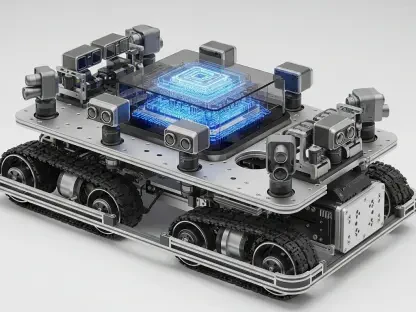Short Introduction
I’m thrilled to sit down with Laurent Giraid, a renowned technologist with deep expertise in Artificial Intelligence, including machine learning, natural language processing, and the ethical implications of AI. Today, we’re diving into the world of unified endpoint management (UEM) with a focus on Microsoft Intune, a leading solution in this space. Laurent brings a unique perspective on how AI and automation are shaping IT operations and security. Our conversation explores the essentials of UEM, the evolution of Intune, its standout features, market position, and what the future holds for endpoint management.
How would you describe Microsoft Intune to someone who’s new to the concept of endpoint management?
Microsoft Intune is essentially a cloud-based toolset that helps businesses manage and secure their devices and applications from a single platform. Think of it as a control center for IT teams to oversee everything from laptops and desktops to smartphones and tablets, no matter if they’re running Windows, iOS, Android, or other systems. It’s a key part of unified endpoint management, or UEM, which is all about simplifying how organizations handle a diverse range of devices and ensuring they’re secure, especially in today’s remote work environment.
Why has UEM become such a critical focus for businesses, especially with the rise of remote work?
UEM has become vital because the workplace has transformed dramatically. With remote work and bring-your-own-device policies, employees are using a mix of personal and company-owned devices across different locations. This creates a huge challenge for IT teams to maintain security and efficiency. UEM provides a centralized way to manage all these endpoints, enforce policies, and protect data without bogging down the user experience. It’s about striking a balance between flexibility for employees and control for the organization, which is more important than ever.
What are some of the standout features of Intune that help IT teams manage devices and apps effectively?
Intune shines with its mobile device management and mobile application management capabilities. For devices, it lets IT admins set security policies, remotely wipe data if a device is lost or stolen, and configure settings across platforms like iOS and Android. On the app side, it allows businesses to deploy, update, or remove apps while protecting corporate data within those apps—even on personal devices. It does this without interfering with personal data, which is a big win for user privacy. Plus, Intune leverages AI and automation to streamline tasks, like identifying security threats or optimizing configurations, saving IT teams a lot of time.
How has Intune evolved over the years to meet the changing needs of businesses?
Intune started as a cloud service back in 2010, focusing on mobile device management when enterprise mobility was just taking off. Over the years, it grew to include more features for diverse platforms and applications. A significant shift happened in 2019 when it was combined with an on-premises tool and rebranded as Microsoft Endpoint Manager to offer a unified interface. By 2022, it returned to the Intune name, reflecting a focus on cloud-first strategies. In 2023, the Intune Suite was introduced, bundling advanced security and management tools for both cloud and on-premises endpoints. This evolution shows a constant adaptation to broader device ecosystems and security challenges.
What sets Intune apart from other UEM solutions in a competitive market?
Intune stands out largely due to its deep integration with other Microsoft services, like Azure Active Directory, which makes authentication and access management seamless. This tight ecosystem gives it an edge for businesses already using Microsoft 365, as it reduces friction in deployment and management. Additionally, its use of AI for automation and security enhancements aligns with where the industry is heading—towards autonomous endpoint management. Research firms often highlight Intune as a leader because of its comprehensive feature set and ability to handle both managed and unmanaged devices effectively.
Can you share your thoughts on how AI is shaping tools like Intune and the broader UEM landscape?
AI is a game-changer for UEM, and Intune is a great example of this. It’s being used to automate repetitive tasks, like policy enforcement or patch management, which frees up IT staff for more strategic work. AI also enhances security by analyzing patterns to detect potential threats before they become issues. Beyond that, it improves the end-user experience by predicting needs or troubleshooting problems proactively. In the broader UEM landscape, I see AI driving us towards fully autonomous systems where endpoints self-manage to a large extent, reducing human intervention and error.
What’s your forecast for the future of UEM and solutions like Intune over the next few years?
I believe UEM will continue to evolve rapidly, with a strong push towards even greater automation and intelligence. For solutions like Intune, we’re likely to see more advanced AI capabilities, such as predictive analytics for device health or security risks. There will also be a deeper focus on supporting diverse and unmanaged devices as hybrid work models persist. Additionally, I expect tighter integration with cloud platforms and enhanced data protection features to address growing privacy concerns. The goal will be to make endpoint management not just reactive, but truly proactive, anticipating issues before they arise.









